Effective Strategies for Termite and Pest Control


Preventive Pest Control Strategies
Effective pest control is not just about addressing issues once they arise; it’s about taking proactive measures to ensure they don't occur in the first place. By implementing preventive pest control strategies, home owners can save themselves a lot of time, money, and hassle in the long run. Here are some detailed and practical methods to safeguard your home from various pests.
House Exterior Protection
Tips for Sealing Cracks
One of the simplest yet most effective ways to prevent pests from entering your home is by sealing any cracks or crevices in the exterior walls. Use caulk or silicone sealant to fill gaps around windows and doors, as these are common entry points for pests. Pay special attention to areas where utility lines enter your home, as they can provide easy access for rodents and insects.
Clearing Debris
Keeping the area around your home clean and clutter-free is crucial. Overgrown vegetation, piled-up wood, and debris can serve as perfect hiding spots for pests. Regularly clear out any organic matter and maintain a tidy landscape to deter unwanted guests.
Preventing Pests from Entering
Ensure that all doors and windows are fitted with screens, and check for any holes or tears. Adding door sweeps can help to block the small gaps that pests love to slip through. This simple action can dramatically reduce the likelihood of an infestation.
Yard Maintenance
Essential Yard Care Routines
Maintaining a healthy yard is not only aesthetically pleasing but can also prevent pests. Regular mowing, trimming, and watering in the morning instead of evening can deter mosquitoes and other pests that thrive in moisture.
Methods for Keeping Yard Pest-Free
Consider using beneficial insects, like ladybugs and predatory beetles, which can control aphid populations effectively. Creating a habitat that invites these natural pest controllers can be key to maintaining a pest-free environment.
Indoor Cleanliness
Expert Cleaning Tips and Techniques
Inside the home, thorough cleaning is essential to reduce pest attraction. Vacuum regularly, especially in corners and under furniture, ensuring crumbs and debris do not become a buffet for pests.
Maintaining a Pest-Resistant Indoor Environment
Keeping food sealed and stored in airtight containers can minimize pest attraction. Additionally, be mindful of unwashed dishes and spills, as these can quickly attract pests if left unattended.
Garbage Disposal
Efficient Waste Disposal Methods
Proper garbage disposal plays a crucial role in pest management. Always use bins with tight-fitting lids and dispose of garbage regularly. Avoid letting trash accumulate, as it serves as an ideal food source for various pests.
Importance of Proper Garbage Disposal
Clean your bins periodically to eliminate odors that can attract rodents and insects. Washing your bins with soap and water is a simple yet effective way to keep pests at bay.
Other Pest Prevention Strategies
Innovative Ways to Safeguard Your Home
Think outside the box with pest prevention. For instance, planting marigolds or mint around your garden can deter certain pests naturally. Investing in outdoor lighting that minimizes attractants for insects can also enhance your home's defenses.
"An ounce of prevention is worth a pound of cure."
Taking these preventive steps, along with regular inspections of your home, sets you on the right path to managing pest issues effectively and efficiently. This proactive approach not only keeps your living space clean but also spares you the headaches associated with infestations.
Prolusion to Pest Control
Understanding pest control is akin to securing the foundation of your home. This article aims to shed light on the intricacies that besiege every homeowner, like an army of uninvited guests that can wreak havoc on property and peace of mind. Pest control is much more than just dealing with a creepy critter scurrying across the floor or the faint rustle in the attic — it’s about safeguarding our living environment and the investment we hold dear.
Understanding the Importance of Pest Control
Pest control is vital for maintaining not only the integrity of our homes but also the health of its inhabitants. Pests such as termites, rodents, and ants can seriously undermine structures, leading to costly repairs. The significance extends beyond mere damage; pests often bring along health hazards. For instance, rodents carry diseases that can be detrimental to families, especially children.
Regular pest control measures act as a deterrent, keeping these unwelcome pests in check. Moreover, effective pest management provides peace of mind. Homeowners can focus on their daily lives, free from the nagging worry of infestations. In a world where one’s tranquility can easily be disrupted, the assurance that comes with proactive pest management cannot be overstated.
"An ounce of prevention is worth a pound of cure." – This old adage rings especially true in the realm of pest control, highlighting the significance of timely action.
Historical Perspectives on Pest Management
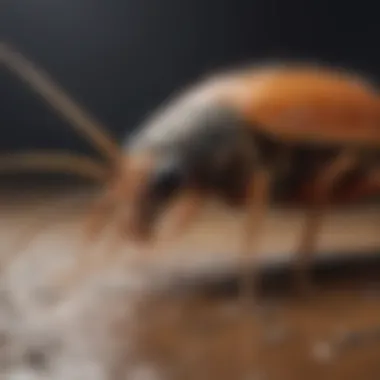
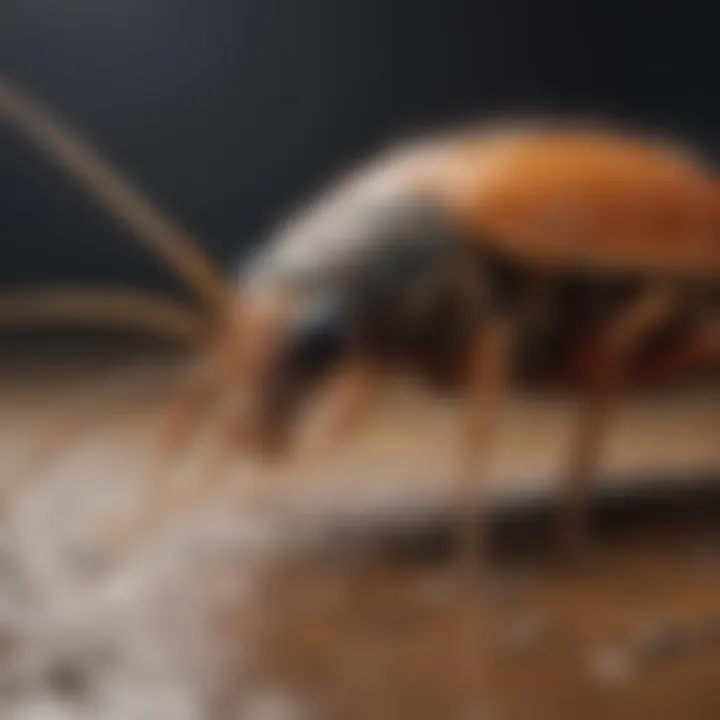
The methods of pest management have evolved significantly over the centuries, and it’s fascinating to explore these shifts. Ancient civilizations employed rudimentary techniques such as the use of traps, smoke, and even cats to manage rodent populations. Fast forward to the 20th century, the introduction of chemical insecticides marked a pivotal change in pest control approaches.
Historically, pest control was seen more as a necessity for survival rather than the preventive practice it is considered today. Traditional cultures often relied on natural remedies and organic methods, driven by the understanding of local ecosystems. However, this has evolved as society industrialized and urbanized. The agrarian roots of pest management began merging with modern warfare-like strategies, leading to sophisticated technologies and wide-scale chemical applications.
In today’s context, as we continue to grapple with the effects of climate change and the ecological footprint of chemical usage, there’s a renewed interest in sustainable pest management practices that take cues from our ancestors while innovating for the future. This blend of history and progress underscores the perpetual importance of understanding pest behavior and active management in our homes and communities.
Types of Pests and Their Impacts
Understanding the types of pests that might invade a home is crucial for any homeowner. Different pests come with varying lifestyles, eating habits, and biological characteristics, which means they can pose different risks to a property, one's health, and the overall environment. Each type of pest behaves uniquely, so knowing what you’re dealing with can make all the difference in effectively controlling them. Not just for cleaning up after an infestation, but for preventing one in the first place.
When we focus on the types of pests present in a home, we find that they can be categorized into various segments, such as insects, rodents, and even larger wildlife. Each group bears its own set of consequences. Hence, recognizing these distinctions helps homeowners undertake a targeted approach to pest management, encompassing identification, prevention, and eradication efforts. Moreover, this approach allows property owners to take informed actions that could save time and resources in the long run.
Identifying Common Pests
Identifying common pests commonly inhabiting homes is the first step in effective pest control. Let’s break down some of the usual suspects:
- Cockroaches: Known for their resilience, these pests are not just unsightly; they can also trigger allergies and asthma. Commonly found in kitchens and bathrooms, their presence often indicates poor sanitation.
- Termites: They are notorious for their wood-eating habits. A termite infestation can go unnoticed for a long time, leading to significant structural damages before being discovered. Early identification is key.
- Ants: From sugar ants to carpenter ants, these tiny invaders can be a huge headache. Carpenter ants, like termites, can damage wood structures.
- Rodents: Mice and rats are not only nuisance but can also pose health threats through their droppings and urine, which can contaminate surfaces and food.
- Bed Bugs: These critters are especially tricky since they feed on human blood and can make a home feel unsafe during the night, leading to sleeplessness and anxiety.
Being vigilant about signs such as droppings, gnawed materials, and unusual pathways can help in spotting these pests early on.
Consequences of Infestations
The consequences of infestations stretch beyond mere discomfort or annoyance. Here are some implications a homeowner might face:
- Structural Damage: Termites alone can cause significant structural issues, weakening the integrity of a house. If not addressed, this results in costly repairs.
- Health Risks: Many pests, especially rodents and insects like cockroaches, can carry health risks. Allergies, asthma, food poisoning, and other diseases can stem from an infestation, particularly in sensitive populations like children and elderly.
- Decline in Property Value: An active pest problem can deter potential buyers or lead to lower offers if you plan to sell your home. Nobody wants a house with a history of pest issues.
- Stress and Discomfort: There’s an emotional toll that comes with having a pest issue, which too often leads to stress for homeowners trying to manage their living conditions.
- Costly Treatments: Dealing with an infestation after it’s settled in usually costs more than preventive measures. Not only treatment costs, but also structural repairs add up.
"Understanding the consequences of infestations is as important as recognizing the pests themselves; knowledge is power in hunting them down."
Termites: A Critical Focus
When it comes to pest control, termites deserve the spotlight. Their propensity for destruction, when left unchecked, can turn a dream home into a nightmare. These wood-devouring insatiable insects are not just a nuisance; they pose a significant threat to property value and structural integrity. Understanding termites is essential to managing their impact effectively.
Understanding Termite Behavior
In the world of pests, termites are quite fascinating yet problematic. Their social structure resembles that of ants, functioning in highly organized colonies. Termites live in colonies that can include thousands to millions of members, each with specific roles—workers, soldiers, and reproducers. The worker termites are particularly noteworthy. They are the ones that chew through wood, often undetected for long periods.
These industrious insects thrive in damp environments. They prefer decaying wood, but they can also attack sound wood if they find it favorable. This leads to an opportunistic nature; if conditions are right, they will invade. By understanding this behavior, property owners can implement proactive measures to deter infestations.
Signs of Termite Infestation
Identifying a termite invasion can be tricky. Often, the damage is done before anyone realizes what’s happening. Here are several signs that may suggest you have unwelcome guests in your home:
- Mud Tubes: Termites often create mud tubes to protect themselves from predators while traveling between their nests and food sources. If you see these pencil-sized tubes on your home’s foundation, take immediate action.
- Swarmers: One of the first signs of a problem may be the sighting of winged termites, also known as swarmers. They tend to leave their nests to establish new colonies, and their presence is a glaring red flag.
- Wood Damage: If you notice wooden structures that sound hollow when tapped, that might indicate termite damage. You may also notice sagging floors or walls, which might suggest more extensive issues.
"Early detection is crucial. Think of termites as silent thieves; they will steal your structural integrity without making a sound."
The Economic Impact of Termites
Aside from the immediate physical damage, termites inflict economic strain on homeowners. Repairing termite damage can be costly, often running into thousands of dollars. In fact, the National Pest Management Association estimates that the average homeowner spends about $3,000 to repair damage caused by termites. For many families, this can mean stretching tight budgets even thinner.
Moreover, properties that have a known termite history can face reduced market value. Buyers may be hesitant to invest in a home that has had previous infestations, worrying about ongoing issues or repairs. Thus, addressing termite problems promptly doesn’t just protect a property—it helps in preserving the value of a home.
Modern Pest Control Technologies
In the growing concern over pest infestations, understanding modern pest control technologies is crucial for home and property owners. These advancements have transformed traditional methods into precise and efficient solutions that address the complexities of managing various pest-related issues. Adopting these technologies means not only looking at immediate results but also considering long-term maintenance and sustainability. This section delves into the noteworthy aspects of three key areas: chemical solutions, biological control methods, and innovations in pest control equipment.
Chemical Solutions and Their Applications
Chemical solutions remain a cornerstone of pest management. They are often preferred for their rapid effectiveness. With a variety of products available, homeowners can choose formulations that target specific pests while minimizing collateral damage to their environment.
- Types of Chemical Solutions:
Insecticides, fungicides, and herbicides are among the most commonly used. Each formulation serves a unique purpose:
- Insecticides target pests like ants, roaches, and termites. Some are designed to act upon contact, while others work through ingestion.
- Fungicides help prevent and control fungal infections that may arise in damp areas.
- Herbicides are plant-specific chemicals that eliminate unwanted vegetation without harming garden flora.
When applying these chemicals, precision is key. Homeowners should follow the instructions meticulously to avoid overuse, which can result in chemical resistance in pests. It’s essential to consider the timing of applications, weather conditions, and the suitability of products based on the specific species being targeted. Furthermore, many contemporary insecticides are formulated to lower toxicity to humans and pets while ensuring effectiveness against the designated pest.
Biological Control Methods
Biological control is a fascinating aspect of integrated pest management. Compared to conventional methods, it employs living organisms or natural processes to mitigate pest populations. This approach is increasingly gaining traction for various reasons:
- Eco-Friendliness: Biological methods significantly reduce the use of harsh chemicals, thereby lessening environmental impacts.
- Sustainability: Natural predators, such as ladybugs for aphids or parasitic wasps for caterpillars, contribute to long-term pest management without prompting resistance.
However, biological control requires detailed knowledge of the ecological balance within a specific environment. Introducing non-native species can sometimes lead to unintended consequences, emphasizing the need for careful planning and monitoring. Homeowners may explore options like encouraging natural predators or incorporating microbial insecticides, which utilize naturally occurring bacteria to target specific pests.
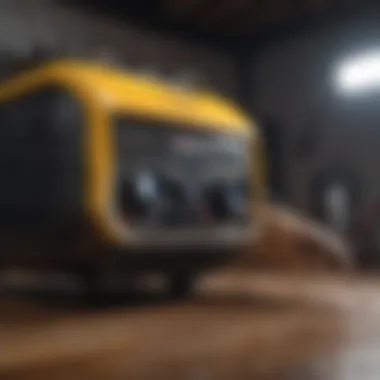

Innovations in Pest Control Equipment
The landscape of pest control is being revolutionized by cutting-edge equipment designed to enhance efficacy and ensure safety. These innovations include:
- Smart Traps: Leveraging technology, smart traps use sensors that notify homeowners when pests are captured. This feature allows for a timely response when dealing with infestations.
- Drones: In expansive properties or agricultural settings, drones are deployed to survey and target infestations in hard-to-reach areas, optimizing pesticide application and reducing waste.
- Heat Treatment Systems: These systems eradicate pests by raising the temperature of an area, killing pests without the need for chemicals. This is particularly advantageous for sensitive environments such as homes with residents who have allergies.
"Modern pest control technologies blend tradition with innovation, providing homeowners not just with reactive measures, but proactive strategies for a pest-free life."
Investing in up-to-date pest control technologies has immense benefits. Not only can they save time and money, but they also enhance the safety and well-being of the home environment. As these tools and methods continue to evolve, they hold the promise of a thorough and thoughtful approach to pest management, paving the way for future advancements.
Integrated Pest Management Strategies
Integrated Pest Management (IPM) is an essential framework that harmonizes effective pest control practices. This concept helps not just in dealing with infestations but also serves to create a balanced ecosystem with minimal environmental impact. By utilizing a range of control techniques from biological to chemical means, IPM prioritizes the long-term prevention of pests rather than just immediate suppression.
Principles of Integrated Pest Management
The foundational principles of IPM are rooted in an understanding of pest behavior, life cycles, and the environments they thrive in. Here are some core tenets:
- Prevention First: Use tactics that keep pests from becoming a problem. This includes physical barriers, proper sanitation, and essential landscape management.
- Monitoring: Regular inspections are crucial. By keeping an eye on patterns and activity, property owners can spot potential issues before they escalate.
- Identification of Pests: Knowing what specific pest you are dealing with can drastically change the approach for management. Not all solutions fit all bugs!
- Mix and Match: Employ a variety of control methods tailored to the biology of the targeted pest. This could involve chemicals, natural predators, or cultural practices.
"Pest management is like a puzzle; understanding each piece helps to keep the whole picture in harmony."
Adhering to these principles not only enhances effectiveness but also promotes a safer environment for homes and families.
Developing a Pest Management Plan
Crafting an effective pest management plan is a proactive approach to maintaining pest-free surroundings. This plan should be dynamic, adjusting according to changing conditions and pest behavior. The steps typically include:
- Assessment of the Property: Conduct a thorough inspection of the property to identify pest threats and conducive conditions.
- Setting Action Thresholds: Decide when to act based on the pest population. Not all pests demand immediate response; some tolerance levels can wait.
- Selecting Control Techniques: Based on the assessment, choose appropriate strategies, mixing biological and chemical approaches when necessary.
- Implementation: Put your plan into action with precision, keeping track of what’s working and what isn’t.
- Documentation: Maintain detailed records of pest activity, control measures taken, and their outcomes. This will help refine future strategies.
Monitoring and Evaluation Techniques
Once a pest management strategy is in place, continuous monitoring and evaluation are key components to success. Here’s how homeowners can ensure their plans remain effective:
- Regular Inspections: Conduct routine checks to assess the efficacy of current strategies and identify any new pest activity.
- Data Analysis: Keep track of pest population trends over time. Use this data to adjust your thresholds or control methods.
- Feedback Loops: After treatment, observe long-term effects and potential resets in pest behavior. This feedback informs whether your IPM practices are effective or need alterations.
- Utilize Technology: Employ digital tools and apps for real-time monitoring and alerts to gather data swiftly and make informed adjustments.
By embedding these practices into daily routines, homeowners position themselves not merely as responders but as astute managers of their environments, ensuring peace of mind and protection from unwanted intruders.
Preventive Measures and Best Practices
When it comes to pest control, taking preventive measures is crucial. It’s like putting on a raincoat before stepping into a downpour; it shields your home from potential issues down the line. Preventive practices can save homeowners time, money, and a whole heap of stress. This section elucidates the essence of these measures, illustrating specific elements that can greatly enhance your defense against unwanted intruders, all while ensuring the process is effective and simple.
Routine Inspections and Maintenance
Carrying out routine inspections in and around your property is akin to regularly checking your tires before a long drive. Just as tires can wear down unnoticed, pests can creep in without your awareness. Regular checks – perhaps every three months – can help identify early signs of infestation. Look for things like shredded wood, droppings, or even the faint scent of mildew, as these can be indicators of pest issues.
Here are some areas to focus on during your inspection:
- Basements and Crawl Spaces: Moist areas are prime spots for termites and other pests. Make sure these areas are dry and well-ventilated.
- Attics: These spaces can often be neglected. Check for nests, droppings, and any other signs of pests.
- Garages and Storage Areas: Clutter can house pests. Maintain cleanliness to minimize hiding spots.
By keeping up with these inspections, you’re not just reacting to problems; you’re staying ahead of them. It’s a proactive approach that emphasizes prevention rather than dealing with an infestation after it occurs.
Homeowner Responsibilities in Pest Control
Maintaining a pest-free environment is not solely the responsibility of pest control professionals; homeowners play a critical role too. Being a vigilant homeowner means you know that every little effort counts in the battle against pests.
Firstly, it’s essential to recognize the signs of an impending issue. If you notice any unusual smells, sounds, or even the presence of small pests, don’t sweep it under the rug. Report and address these sightings immediately, as early intervention can significantly reduce the escalation of a problem.
Moreover, maintain your yard even if it requires a little elbow grease:
- Regularly Trim Trees and Bushes: Keeping plants well-groomed maintains airflow and reduces pest habitats.
- Dispose of Debris: Pile-ups can be home to termites, roaches, and other pests. Clean up leaves and branches, especially against the foundation of your home.
- Seal Cracks and Openings: Regularly inspect your home’s exterior for potential entry points. A detailed inspection can show gaps and cracks that pests might exploit.
"An ounce of prevention is worth a pound of cure - especially when it comes to keeping your home pest-free."
Legal and Ethical Considerations in Pest Control
Navigating the labyrinth of pest control isn’t just about ridding a home of nuisances; it also involves a keen understanding of the legal framework and ethical implications surrounding these practices. This section underscores the significance of adhering to laws and ethical standards, emphasizing that responsible pest management is essential not only for compliance but also for safeguarding the environment and public health.
Regulations Governing Pest Control Practices
In many countries, pest control practices are strictly regulated to ensure safety for both humans and the environment. Regulatory bodies establish guidelines that pest control professionals must follow. This includes the registration and proper use of pesticides, which are categorized by their toxicity and potential environmental impact.
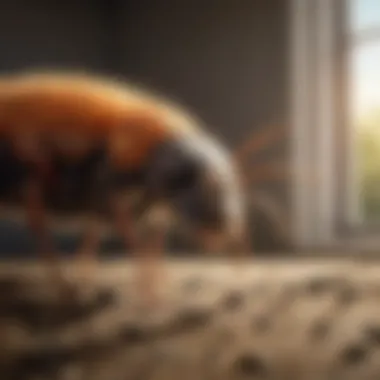
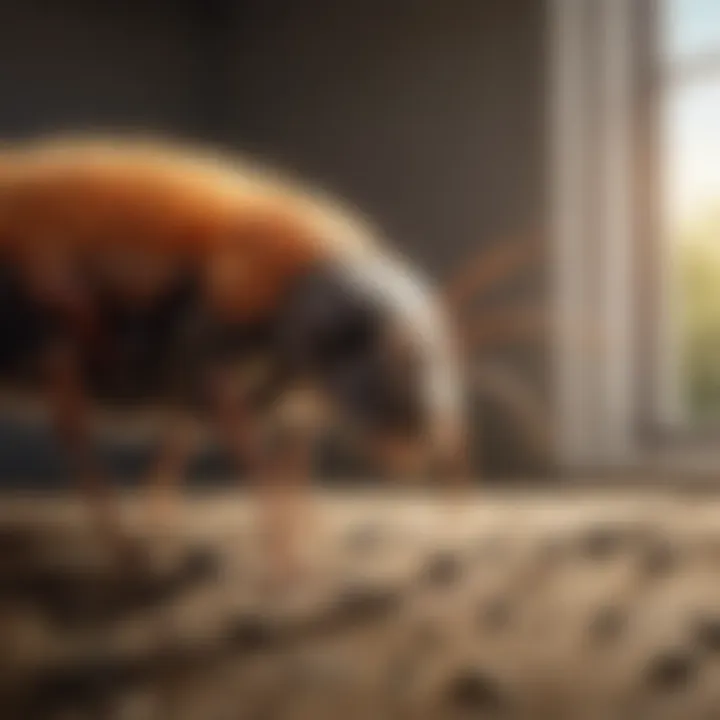
A few crucial regulations to consider are:
- Federal Insecticide, Fungicide, and Rodenticide Act (FIFRA): This mandates that all pesticides used must be registered and labeled according to federal standards. Misuse of these chemicals can lead to hefty fines or even the license revocation of the pest control company.
- National Environmental Policy Act (NEPA): This requires that any pest management plan is assessed for its environmental consequences, giving communities a voice in the pest control methods being employed.
- State-Specific Regulations: Many states enforce additional laws that may be more stringent than federal rules. It's vital for homeowners to be aware of their local guidelines when considering pest control services.
Understanding these regulations helps homeowners ensure they are opting for services that operate within legal boundaries, thus protecting themselves from liability.
Ethical Implications of Pest Control Methods
Beyond legal compliance, the ethics of pest control practices raises many questions. The choices pest control professionals make can have wide-ranging consequences on ecosystems, animal welfare, and community well-being. Here are several aspects to ponder:
- Humane Treatment of Animals: Many pest control companies are shifting toward more humane methods of extermination and exclusion. For instance, live traps for rodents reflect an ethical strategy that reduces suffering, promoting the idea of relocation instead of extermination.
- Sustainability: The environmental footprint of pest management should not be overlooked. Eco-friendly solutions, like the use of beneficial insects or organic pesticides, show a commitment to preserving the environment while effectively managing pest issues.
- Informed Consent: Homeowners have the right to be fully informed about the methods being used in their homes. Ethical pest control practices should involve educating clients on the pros and cons of different strategies, enabling informed decisions.
"Pest control is not simply a matter of eradication; it’s about balance, education, and respect for our shared environment."
The profound effects pest control methods can have on public health and environmental integrity make it critical to approach the subject with care and consideration. Thus, homeowners should engage with pest control providers who prioritize ethical practices and regulatory compliance, ensuring a holistic approach towards pest management.
Case Studies of Successful Pest Control
Drawing from real-life experiences provides invaluable insight into the efficacy of pest control strategies. Not only do case studies illustrate how particular methods yield results, but they also serve as inspirational tales for homeowners dealing with pest issues. These narratives unveil practical approaches that have proven successful while emphasizing the need to adapt solutions based on specific situations. Understanding these experiences can help others identify effective techniques and perhaps detect their issues earlier, avoiding costly and extensive repairs later down the line.
Residential Success Stories
Homeowners often find themselves in a sticky situation when dealing with termites, rodents, or other unwelcome guests. A well-documented residential case involved a charming bungalow in Sacramento plagued by termites. The homeowner noticed sawdust-like debris appearing around the foundation and decided to investigate further. Through an initial inspection, a local pest control expert established that these pests were making a meal out of the wooden beams beneath the house.
The approach taken here blends chemical treatments and preventive measures. The pest control service applied a targeted insecticide specifically designed for termites. Afterward, they suggested a structural review to determine if repairs were necessary. As a precautionary measure, the crew also treated the surrounding area and introduced a moisture barrier in the crawl space – a common hiding spot for termites.
The after-action results were encouraging. The homeowner reported having no signs of continued termite activity years later due to regular follow-ups and maintenance checks. It showcases a crucial element: proactive pest control strategies can be more effective than reactive ones.
Commercial Pest Management Case Studies
When it comes to commercial properties, the stakes can be notably higher. A recent example can be found in a restaurant located in Chicago that faced an infestation of cockroaches. The business was at risk, not only because of potential health code violations but also due to the impact on its reputation. The restaurant owner needed a swift, effective solution.
A local pest control company was brought in, conducting an extensive assessment of the premises. Through their methodical approach, the team found gaps around the plumbing fixtures that provided easy entry points for the pests. Applying a two-pronged strategy, they utilized both traps and bait placements. The bait included an ingredient specifically chosen to minimize risk to food service while effectively targeting cockroaches.
Implementation of good sanitation practices played a tremendous role as well. The pest control team trained the staff on proper cleaning routines that would limit pest harborage. A follow-up was arranged within two weeks to ensure the treatment worked effectively. After the initial treatment and ongoing monitoring, the restaurant was free of cockroaches, allowing it to regain its great standing in the community.
These case studies underscore significant components of successful pest management. Understanding the history of pest issues in residential and commercial properties provides not only learning opportunities but also delivers a roadmap for others facing similar situations.
"An ounce of prevention is worth a pound of cure." This old saying rings true in pest control, where early detection and proactive measures make all the difference.
Future Directions in Termite and Pest Control
As we gaze into the future of pest control, particularly with termites, several trends and technologies stand out. These advancements not only reshape our battle against pests but also emphasize the necessity for innovative approaches to manage infestations effectively. One sizable benefit is that these new strategies can minimize harm to both property and environment while ensuring comprehensive treatment plans for homeowners.
Emerging Technologies and Their Potential
With science and tech booming like never before, it’s clear that pest control is jumping on the bandwagon. Some of the most promising technologies include smart sensors and data analytics tools that help in detecting pests before an infestation becomes costly.
- Smart Sensors: These devices can be placed around the home to monitor signs of termites, like humidity or heat changes, which indicate their presence. They send alerts to homeowners, allowing for earlier action, which is much more effective and less expensive than waiting for the pests to take hold.
- Drones: A newer kid on the block, drones can survey large properties quickly. They are particularly useful in agricultural settings or densely wooded areas where traditional methods may miss hidden nests.
- Biopesticides: These environmentally-friendly options work on a biological level to control pests. For example, some utilize naturally occurring pest predators or microorganisms, reducing reliance on harmful chemicals.
"Innovative technologies in pest control are not just about expelling unwanted guests, but about ensuring that the approach is sustainable and safe for future generations."
The Role of Environmental Sustainability
In today’s world, sustainability is more than just a buzzword; it’s a necessity. Homeowners are increasingly aware of the impact of chemicals on their families, pets, and the environment. The future in pest control certainly favors greener solutions that work without the extensive use of chemical pesticides.
- Integrated Pest Management (IPM): This strategy focuses on using a combination of methods, rather than solely chemical solutions. By incorporating biological pest control and cultural practices, homeowners can enjoy effective pest management that aligns with sustainability goals.
- Eco-friendly Alternatives: For instance, using diatomaceous earth or neem oil can be highly effective against various pests without the harmful side effects. Homeowners can opt for these solutions to guard their properties without a chemical-heavy footprint.
- Community Awareness and Education: By keeping informed about sustainable practices and technologies, homeowners can actively participate in pest control efforts. Community outreach programs can foster a neighborhood-wide approach to pest management, leading to broader successes in minimizing infestations.
Ending and Final Thoughts
In the realm of pest control, particularly concerning termites, a clear conclusion emerges: precision is paramount. As we have thoroughly explored in this article, engaging with pest control is not simply about eradication; it encompasses a spectrum of proactive measures, informed choices, and informed strategies. Understanding the nuances of termite and pest behavior facilitates better decision-making. When tackling infestations—especially those pesky termites that can silently wreak havoc—having a grounded approach can save homeowners from significant financial and structural distress.
Summarizing Key Insights
As the discussion wraps up, several key insights stand out, emphasizing the intricate connection between effective pest management and property maintenance.
- Identification is Critical: Early recognition of pests can substantially reduce damage and expenses. Homeowners should be vigilant about familiar signs, such as mud tubes or frass from termites, which signal an invasion.
- Integrated Pest Management (IPM): This systemic approach combines various strategies—biological, chemical, cultural—tailored to the situation at hand. By embracing IPM, homeowners are more likely to minimize harm to the environment while gaining control over pest populations.
- Continuous Monitoring: Creating a habit of periodic inspections is essential. This could involve simple practices such as checking basements for moisture or attics for wood borers. Regular maintenance can reveal problems before they escalate.
Overall, the journey through pest control is layered with considerations that range from understanding specific types of infestations to employing the latest technologies.
The Ongoing Importance of Precision in Pest Control
Precision in pest control is not just a luxury; it is a necessity. In today’s context where pest populations are evolving, and innovative solutions are continuously developing, having an exact, reliable approach to pest management plays an undeniably crucial role. It helps maintain harmony within homes and workspaces, ensuring that these environments remain safe, healthy, and pest-free.
Moreover, as homeowners become more educated about their pest issues, this leads to empowered decisions. When armed with the right information, homeowners can directly influence the effectiveness of pest control measures, ensuring that they are not merely treating the symptoms but addressing the root causes effectively.
"Preventive measures and informed engagement are the first lines of defense against pests, safeguarding your property and peace of mind."
In the long run, prioritizing precision, comprehensive strategies, and a commitment to ongoing education will benefit not just individual households, but also contribute to greater environmental sustainability. As we close this in-depth analysis, recall that a proactive, well-informed approach to pest control paves the way for lasting results and tranquility in your living spaces.



